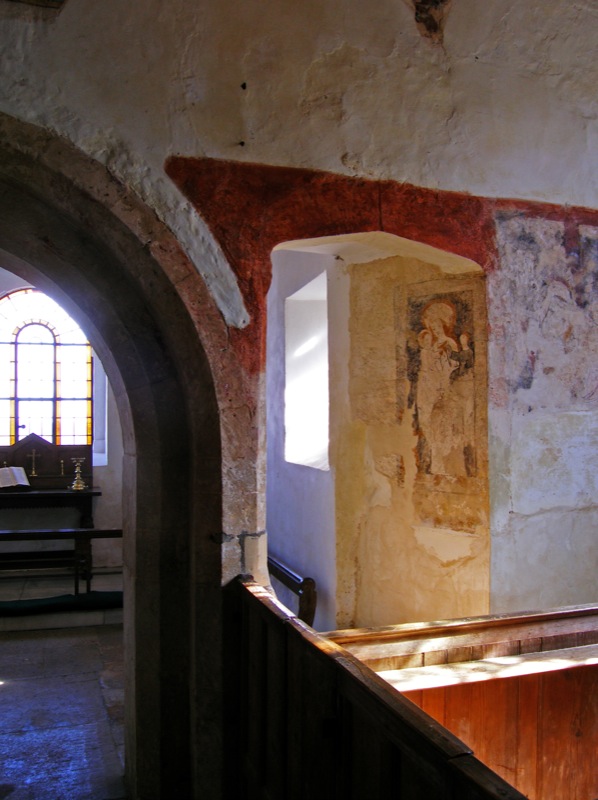The Legend of the Clay Birds
This lovely fifteenth century wallpainting at Shorthampton in Oxfordshire, probably represents an episode that is recorded in the second cnetury apocryphal Infancy Gospel of Thomas. In this story Jesus is playing with a group of children who are making clay figures of animals including birds. Jesus makes some figures himself and he commands the figures to move and the birds to fly and they do so. Here is the story in full:
'And when the Lord Jesus was seven years of age, he was on a certain day with other boys his companions about the same age. Who when they were at play, made clay into several shapes, namely, asses, oxen, birds, and other figures, each boasting of his work, and endeavoring to exceed the rest. Then the Lord Jesus said to the boys, I will command these figures which I have made to walk. And immediately they moved, and when he commanded them to return, they returned. He had also made the figures of birds and sparrows, which, when he commanded to fly, did fly, and when he commanded to stand still, did stand still; and if he gave them meat and drink, they did eat and drink. When at length the boys went away, and related these things to their parents, their fathers said to them, Take heed, children, for the future, of his company, for he is a sorcerer; shun and avoid him, and from henceforth never play with him.'
(Infancy Gospel of Thomas 15. 1-7) Source: http://www.octc.kctcs.edu/crunyon/CE/Koran-Rushdie/Koran/infancy_gospel.htm
The wallpainting is the standard medieval way of representing this story. Our Lady holds Jesus and one of his brothers who are both playing with a clay bird. Notice that Jesus is differentiated from his brother in three ways, by his nimbed, by being set higher and by Our Lady focusing her gaze on him.
John Ward (Oxfordshire Churches) has a super picture of the inside of the atmospheric church at Shorthampton, which shows the unusual placement of this panel on the splay of a squint to the right of the chancel arch. Do visit this church if you are in the area it is extremely rewarding. The panel I have discussed is one of a series of medieval wallpaintings that remain.


Comments